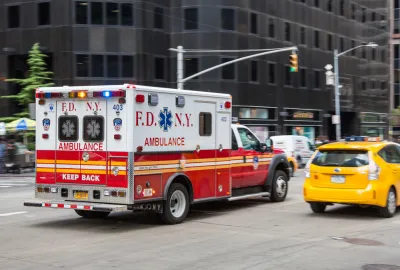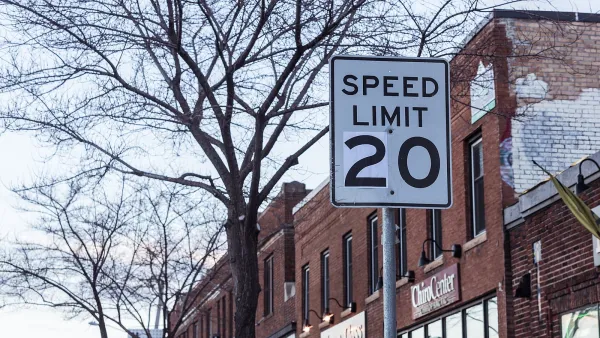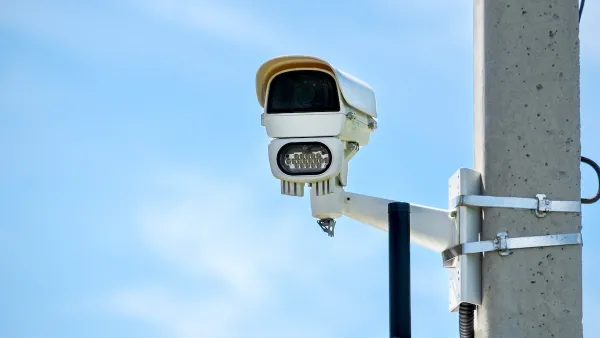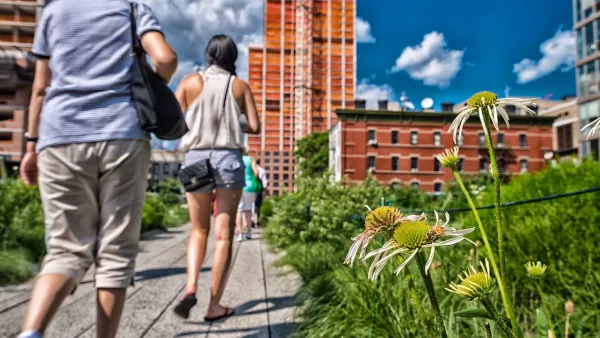Are the needs of emergency response vehicles inconsistent with nondrivers’ needs for slower, safer streets? Maybe not.

One common argument against efforts to create street space for bicycles and other nondrivers is that emergency response vehicles such as ambulances need to drive very fast in case someone has a heart attack, and that therefore all streets should be as wide as possible so that ambulances can drive as fast as 100 miles per hour. But wide streets create a variety of negative side effects: by facilitating fast automotive traffic, they increase the number of fatal crashes, since a car hitting a pedestrian (or another driver) at 50 miles an hour is more likely to cause death than a car traveling 20 miles per hour. In addition, wider streets, by facilitating fast traffic, also encourage long commutes, thus increasing suburban sprawl, which in turn increases vehicle miles traveled and a wide variety of other vehicle-related externalities such as increased greenhouse gas emissions.
Thus, the “emergency response” argument in favor of wide streets only makes sense if the risk of death from a too-slow ambulance outweighs the risk of death from a speeding car. Since over 40,000 Americans died in car crashes last year, this claim seems hard to believe.
But even if this were the case, the needs of emergency vehicles do not support American street design policies that encourage wide roads, fast traffic, and suburban sprawl. Why? Because if we really wanted to get other cars out of the way of ambulances, we would minimize vehicle miles traveled. For example, let’s suppose that instead of extending 50 or 60 miles from downtown, metropolitan Atlanta’s 6 million people lived at Manhattan densities (averaging about 70,000 people per square mile) and lived on narrower, more walkable streets. If this was the case, all of metro Atlanta would fit into an area slightly smaller than Brooklyn (97 square miles). Presumably, traffic would move more slowly, which would be bad for ambulances. So at first glance, it might seem that our hypothetical Atlanta would be far worse for ambulance service than the status quo.
On the other hand, in this scenario, more people would walk or use public transit, so ambulances would not have to compete with as many cars for street space. (Admittedly, they would have to compete with walkers and cyclists—but these groups take up less street space than cars). More importantly, ambulances would not have to travel nearly as far: a quick look at a map of Brooklyn suggests that no one lives more than a mile or two from the nearest hospital. By contrast, in some Atlanta exurbs, the nearest hospital is nine or ten miles away. So the time ambulances would lose in speed they would gain in reduced distance.
Moreover, if we really want to protect ambulances from being slowed down by automobiles, we might want to keep the rest of the citizenry out of cars by giving them other ways of getting around, such as subways and bike lanes. Here, the needs of ambulances are actually consistent with the needs of nondrivers.
Similarly, if we really wanted to make ambulances fast, we wouldn’t have a street network that looks like that of a typical Sun Belt suburb. In many newer suburbs, nearly all residential streets are cul-de-sacs. As a result, most automobile traffic is funneled into a few major commercial streets, thus making those streets unnecessarily congested.
If we really wanted to speed up ambulances, we would put residential streets on a grid, so that ambulances could avoid motorists who were trying to reach offices and stores. Here too, the needs of ambulances are consistent with the needs of nondrivers: with gridded streets, people who want to reach one residential street from another residential street should be able to walk between those streets without having to go to a congested, high-speed commercial street.
In sum, it is occasionally argued that the needs of ambulances are inconsistent with the needs of nondrivers, because ambulances benefit from fast traffic, and nondrivers are safer with slow traffic. But in fact, the interests of ambulance drivers and nondrivers may not be so far apart.

National Parks Layoffs Will Cause Communities to Lose Billions
Thousands of essential park workers were laid off this week, just before the busy spring break season.

Retro-silient?: America’s First “Eco-burb,” The Woodlands Turns 50
A master-planned community north of Houston offers lessons on green infrastructure and resilient design, but falls short of its founder’s lofty affordability and walkability goals.

Delivering for America Plan Will Downgrade Mail Service in at Least 49.5 Percent of Zip Codes
Republican and Democrat lawmakers criticize the plan for its disproportionate negative impact on rural communities.

Test News Post 1
This is a summary

Test News Headline 46
Test for the image on the front page.

Balancing Bombs and Butterflies: How the National Guard Protects a Rare Species
The National Guard at Fort Indiantown Gap uses GIS technology and land management strategies to balance military training with conservation efforts, ensuring the survival of the rare eastern regal fritillary butterfly.
Urban Design for Planners 1: Software Tools
This six-course series explores essential urban design concepts using open source software and equips planners with the tools they need to participate fully in the urban design process.
Planning for Universal Design
Learn the tools for implementing Universal Design in planning regulations.
EMC Planning Group, Inc.
Planetizen
Planetizen
Mpact (formerly Rail~Volution)
Great Falls Development Authority, Inc.
HUDs Office of Policy Development and Research
NYU Wagner Graduate School of Public Service






























